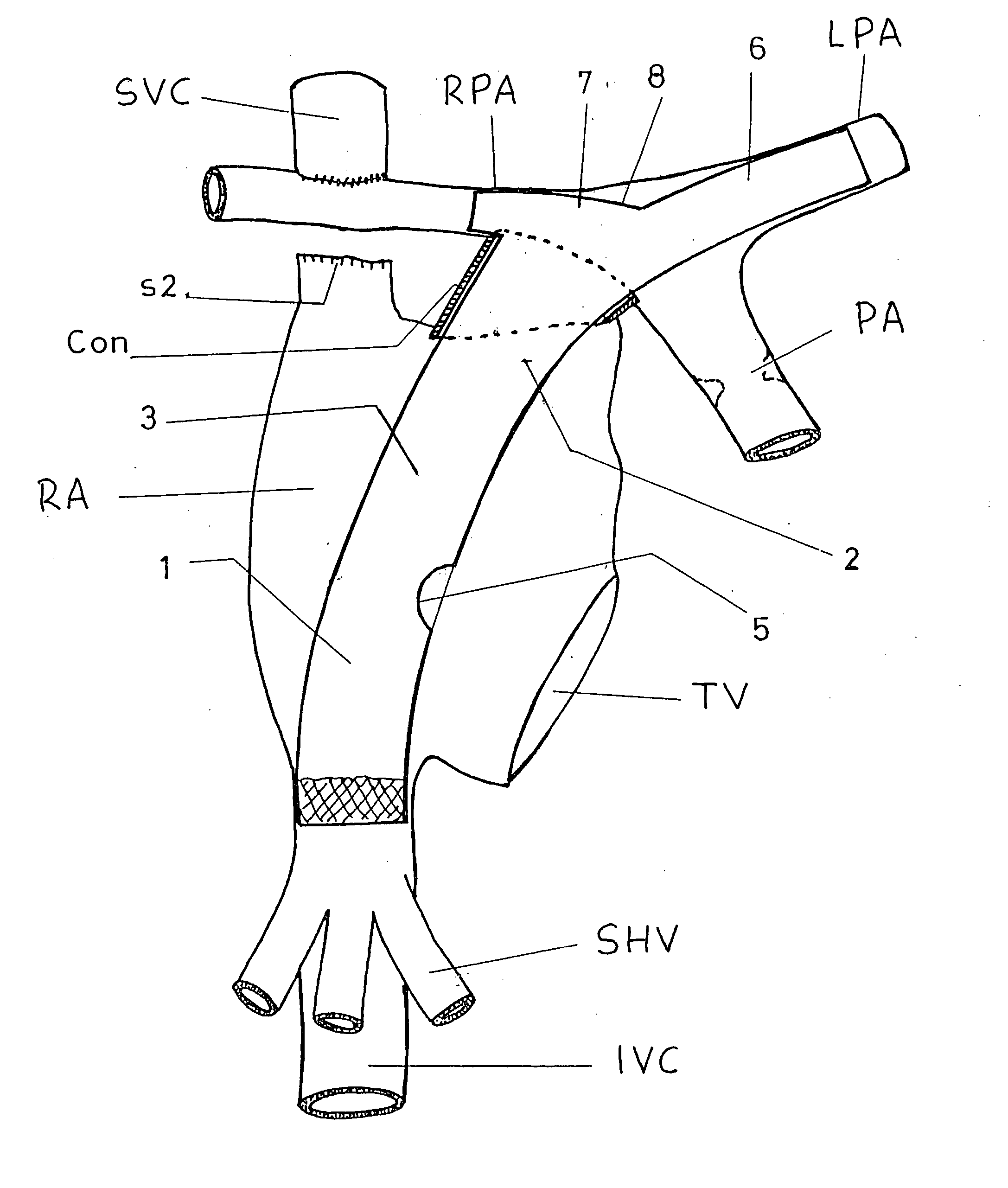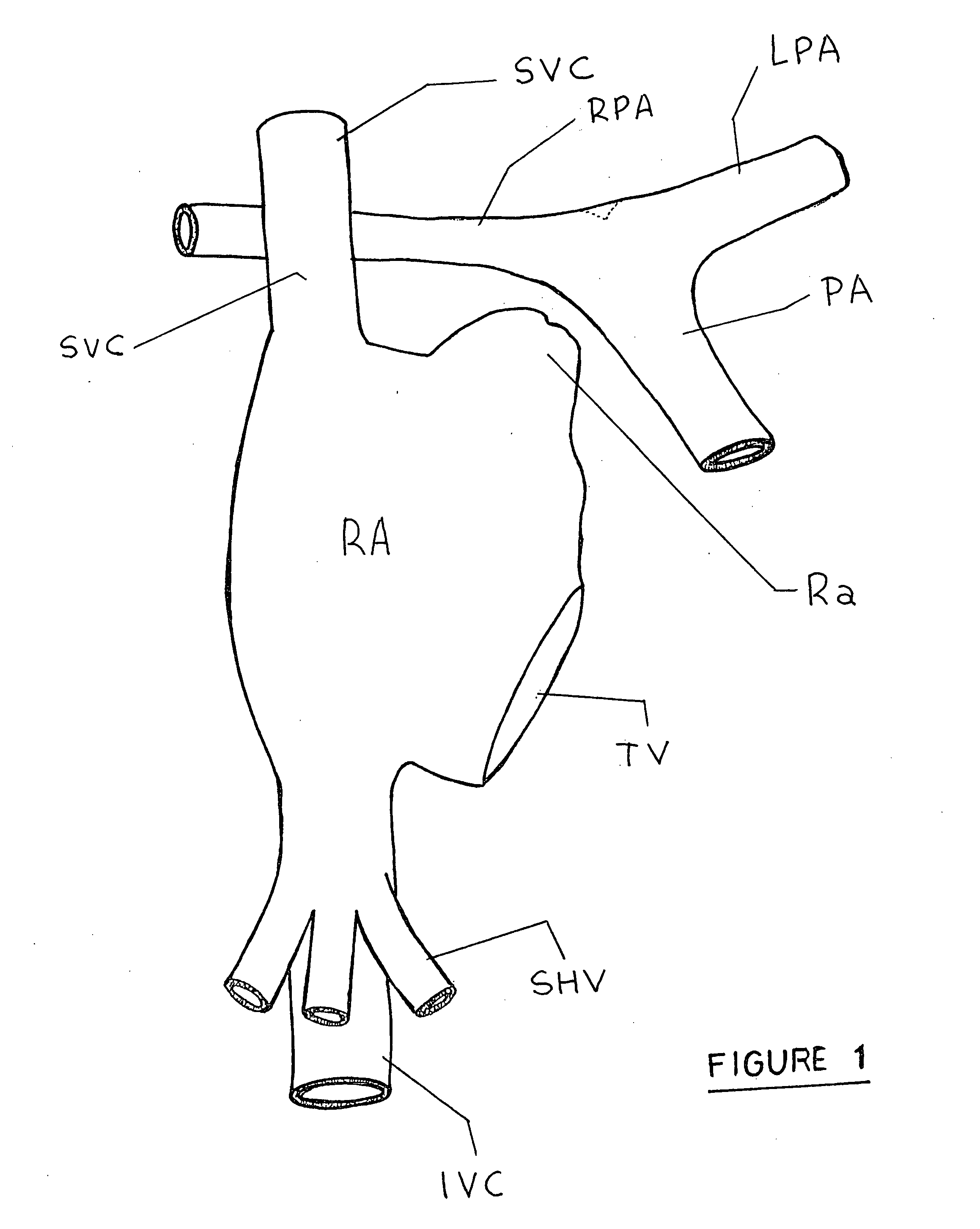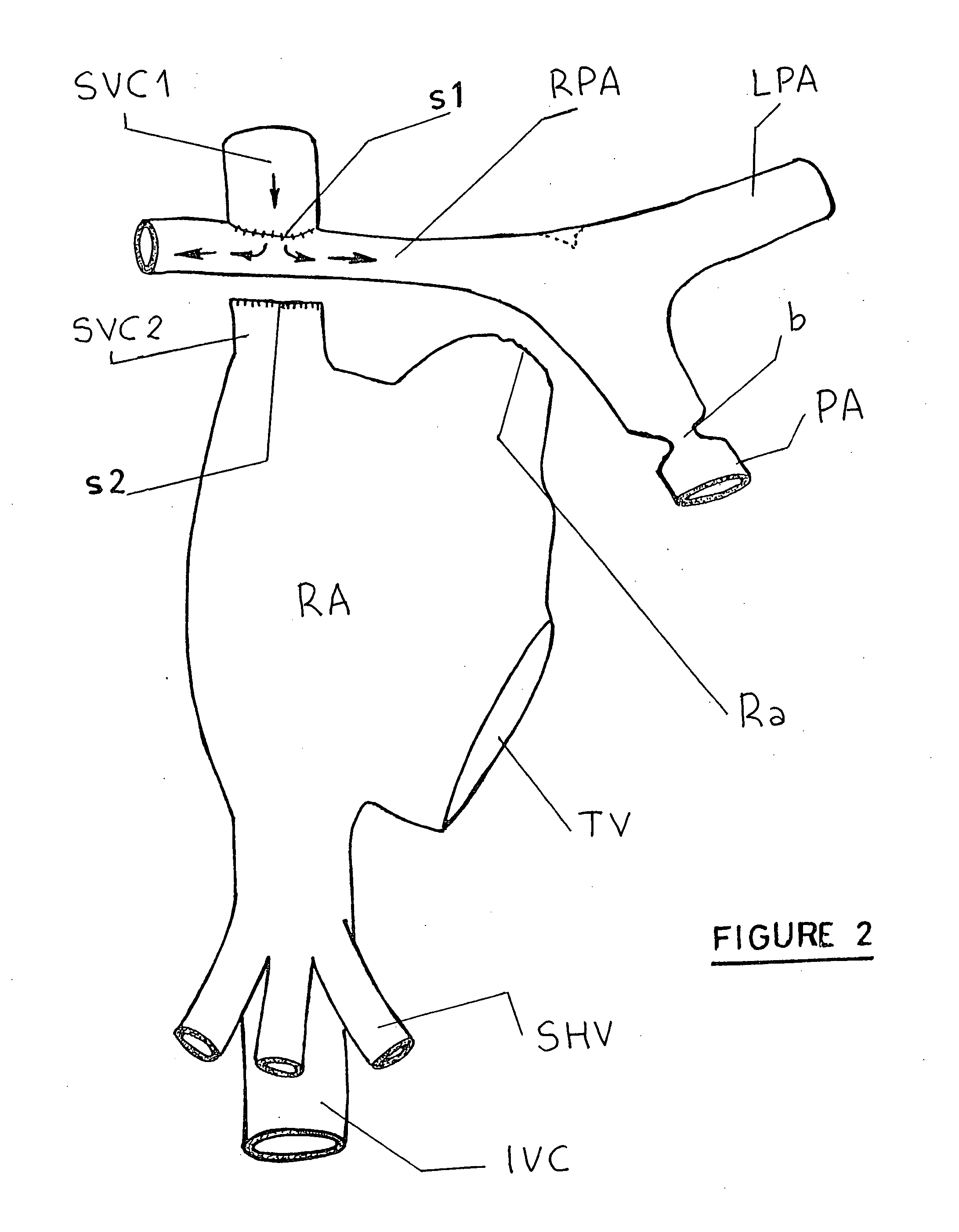Fenestrated asymmetric intracardiac device for the completion of total cavopulmonary anastomosis through cardiac catheterization
a technology of pulmonary anastomosis and pulmonary catheterization, which is applied in the field of pulmonary anastomosis total cavopulmonary anastomosis through cardiac catheterization, can solve the problems of inconvenient supply of unbalanced flow to the pulmonary circulation, no optimal outcome of these interventions, and deficient supply, so as to reduce the total resistance
- Summary
- Abstract
- Description
- Claims
- Application Information
AI Technical Summary
Benefits of technology
Problems solved by technology
Method used
Image
Examples
Embodiment Construction
TO PERFORM THIS INVENTION
[0068] The following sketches together with their description will illustrate the examples of the performance of this invention.
[0069] This example of performance should be understood as one of the many possible constructions of the invention, not limiting its use, including in its protection boundary the possible equivalent means described, being the spectrum of this invention determined by the first claims attached in the Claims Chapter.
[0070] Likewise, in this figures, the same references identify the same or equivalent means.
[0071]FIG. 1, shows schematically a heart portion with the congenital CHD, depicted above and presents only the influence area related to RA.
[0072]FIG. 2, shows the same heart portion of FIG. 1 which has undergone the Glenn procedure and banding in pulmonary artery.
[0073]FIG. 3, shows a view in lateral elevation of one of the possible constructions of the invention device.
[0074]FIG. 4, shows a construction of the device in deta...
PUM
 Login to View More
Login to View More Abstract
Description
Claims
Application Information
 Login to View More
Login to View More - R&D
- Intellectual Property
- Life Sciences
- Materials
- Tech Scout
- Unparalleled Data Quality
- Higher Quality Content
- 60% Fewer Hallucinations
Browse by: Latest US Patents, China's latest patents, Technical Efficacy Thesaurus, Application Domain, Technology Topic, Popular Technical Reports.
© 2025 PatSnap. All rights reserved.Legal|Privacy policy|Modern Slavery Act Transparency Statement|Sitemap|About US| Contact US: help@patsnap.com



